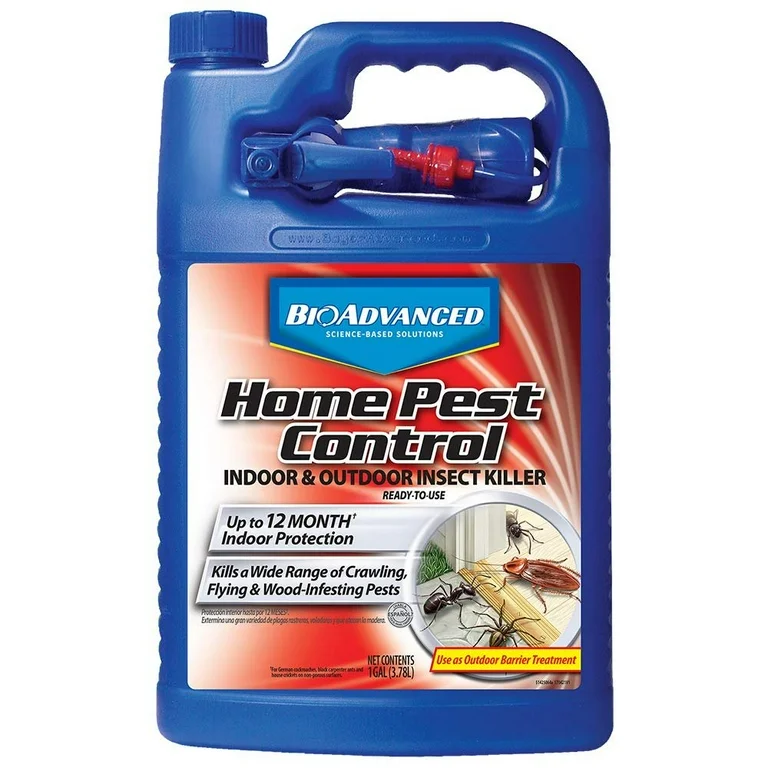Efficient A1 Bed Bug Treatment in Charlotte - Safe and Proven Methods
Wiki Article
Bed Bug Therapy Breakdown: Contrasting Chemical Vs. Non-Chemical Solutions
In the realm of insect control, specifically when handling the relentless problem of bed insects, the selection in between chemical and non-chemical treatment remedies can be a critical one. Both techniques supply distinctive benefits and drawbacks, affecting factors such as efficiency, safety and security considerations, and total price. By examining the nuanced details of each technique, a more clear understanding of which course to seek in dealing with a bed insect invasion can be obtained.Performance of Chemical Therapies
Chemical treatments for bed pest invasions have actually been commonly recognized for their powerful and fast efficacy in eliminating these pests. When taking into consideration the efficiency of chemical therapies, it is critical to comprehend that they can offer a quick and thorough option to a bed bug issue.Furthermore, chemical therapies have the advantage of providing recurring impacts, indicating that they can remain to remove bed insects also after the initial application. This recurring action is particularly advantageous in combating any kind of prospective re-infestations. In addition, the quick action of chemical therapies can bring relief to individuals facing extreme bed bug invasions, permitting them to restore control of their living areas swiftly.
Safety And Security Worry About Chemical Solutions
When making use of chemical options for bed pest treatment is making sure the security of residents and the atmosphere,One crucial element that needs careful consideration. While chemical therapies can be effective in eradicating bed pests, they may present risks if not taken care of effectively. One of the primary safety issues with chemical solutions is the prospective harm they can cause to human health and wellness. Exposure to specific chemicals utilized in bed pest therapies can result in respiratory system concerns, skin irritation, or various other damaging reactions, particularly in people with pre-existing conditions or level of sensitivities. Furthermore, inappropriate application or dose of chemical pesticides can result in poisonous residues sticking around in the cured location, posturing lasting wellness risks to owners.Furthermore, the environmental influence of chemical services is an additional significant factor to consider. Some pesticides used in bed insect therapies might be hazardous to helpful insects, wild animals, and ecosystems if they leach right into the soil or water supply. It is vital to utilize chemical therapies judiciously, complying with safety and security guidelines, and thinking about much less harmful alternatives to mitigate these risks and make sure the safe and effective management of bed bug invasions.
Benefits of Non-Chemical Techniques
Taking into consideration the prospective safety issues and ecological effect associated with chemical remedies for bed insect treatment, exploring non-chemical strategies provides a promising option with several distinct advantages. Non-chemical treatments are eco pleasant, as they do not contribute to air or water air pollution, making them a sustainable selection for bug control.Furthermore, this article non-chemical remedies can be efficient in targeting bed pests, including hard-to-reach locations where chemical treatments might not permeate. Approaches such as warm treatment, vacuuming, heavy steam cleansing, and bed mattress coverings offer thorough eradication without making use of damaging chemicals. Furthermore, non-chemical strategies can be less turbulent, calling for very little preparation and permitting quicker reentry right into treated locations. In general, deciding for non-chemical bed bug treatment approaches not only focuses on security and ecological defense however likewise ensures extensive and effective parasite visit this web-site control.
Limitations of Non-Chemical Treatments

Furthermore, non-chemical therapies frequently require numerous applications to achieve successful elimination. This can be time-consuming and may not constantly ensure total removal of all bed bugs and their eggs, especially in concealed or hard-to-reach areas.
Furthermore, the success of non-chemical treatments greatly relies on proper execution and thoroughness, which can be challenging for individuals without expert knowledge. Poor application of non-chemical methods may result in incomplete elimination, bring about persistent infestations and the requirement for extra treatments.
For that reason, while non-chemical therapies have their benefits, it is necessary to acknowledge these restrictions and consider them when establishing the most effective approach for managing bed insect invasions.
Expense Contrast: Chemical Vs. Non-Chemical Options
Given the constraints connected with non-chemical therapies, a vital element to assess in the context of bed bug management is the price contrast in between chemical and non-chemical choices. Chemical treatments commonly involve the application of insecticides by experts, which can vary from $250 to $900 per space, depending on the severity of the invasion and the size of the area to be treated. In contrast, non-chemical treatments like heat treatment or vapor can be extra costly, with expenses varying from $1,000 to $6,000 for an entire home. While the first price of chemical treatments might appear reduced, several treatments may be called for to totally get rid of the problem, potentially increasing the total expense. On the other hand, non-chemical options might offer a more sustainable and eco-friendly option, although they can be cost-prohibitive for some individuals. Ultimately, when taking into consideration the price of bed bug therapy choices, it is necessary to useful source evaluate the upfront costs against the performance and long-lasting sustainability of the selected method.Verdict

Taking into consideration the potential security problems and environmental influence linked with chemical options for bed bug therapy, exploring non-chemical techniques offers an encouraging alternative with a number of unique advantages.Offered the limitations associated with non-chemical treatments, an important element to evaluate in the context of bed bug administration is the price contrast between chemical and non-chemical options. In contrast, non-chemical treatments like warm therapy or vapor can be more expensive, with costs ranging from $1,000 to $6,000 for a whole home. While the initial cost of chemical treatments may seem lower, numerous therapies might be required to fully eliminate the invasion, potentially boosting the general expense.In verdict, when contrasting chemical and non-chemical bed pest treatment alternatives, it is important to consider performance, security, benefits, constraints, and expense.
Report this wiki page